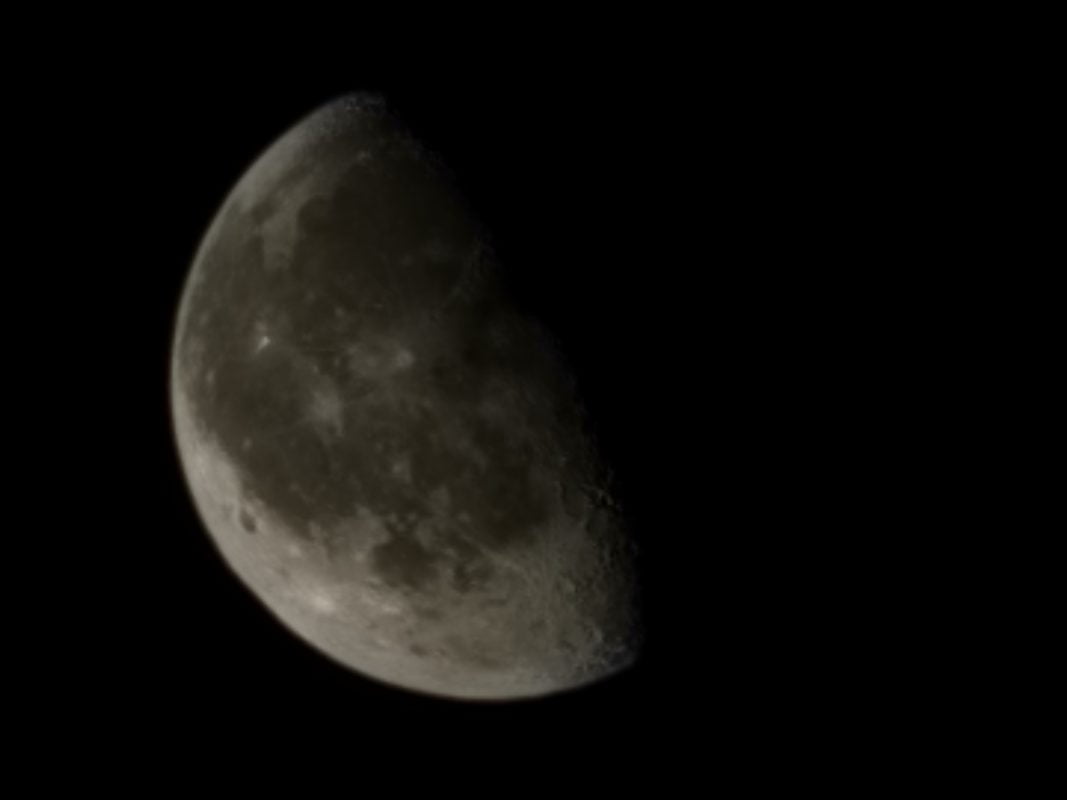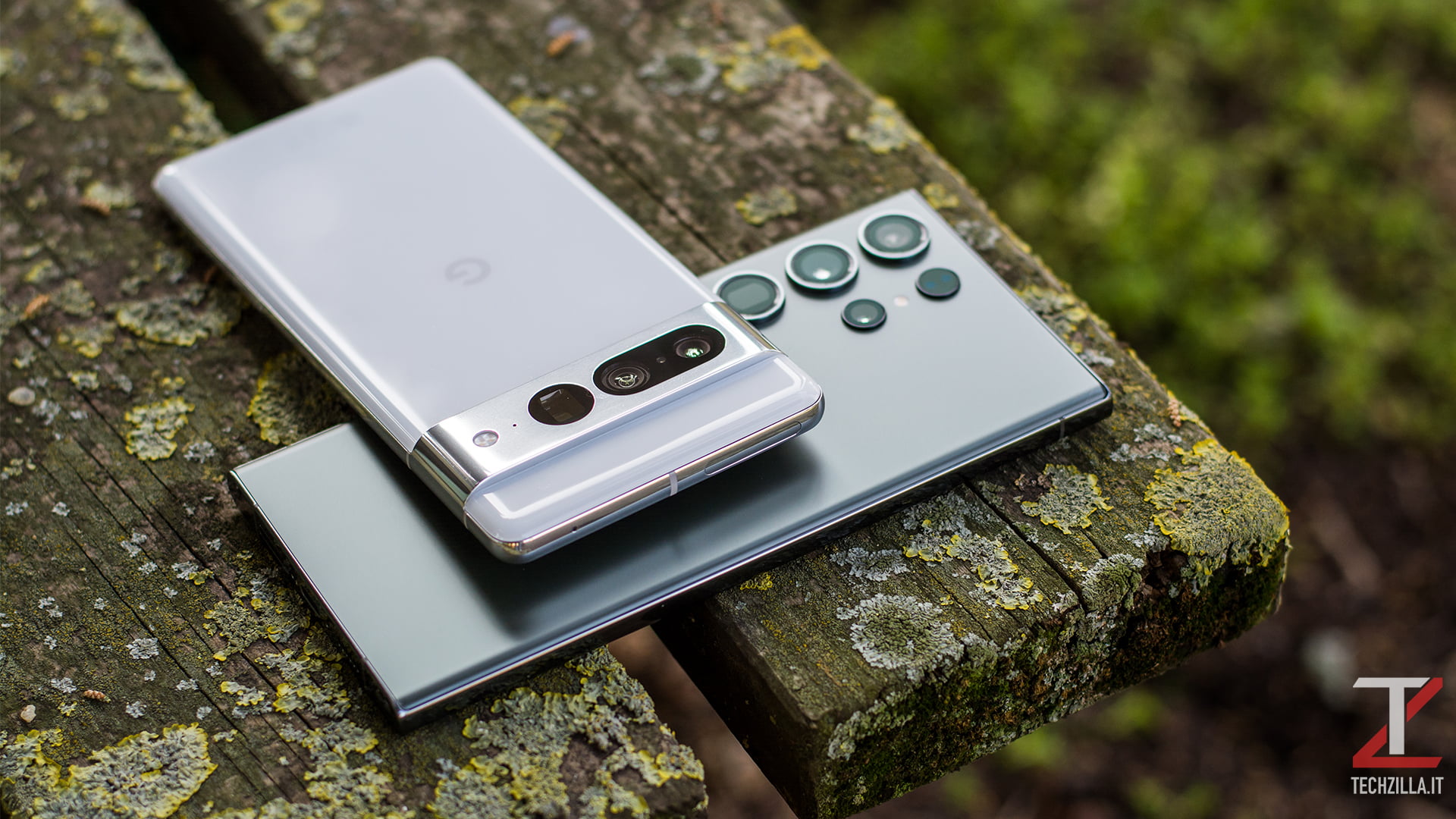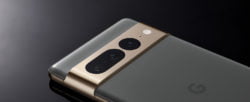Samsung’s flagship for 2023, the Galaxy S23 Ultra, challenge the competition. It is, therefore, the time for comparisons. In particular, we wanted to compare and measure the performance of the new photographic sector of the Samsung device with a reference smartphone in the Android world, the Google Pixel 7 Pro.
Different in terms of selling price and construction philosophy, the two smartphones are ready to battle each other to the rhythm of shots and imprinted frames. Let’s take a look at the results!
Samsung Galaxy S23 Vs Google Pixel 7 Pro – I sensori installati
Samsung, with the Galaxy S23 Ultra, tries to offer a level and complete photographic tool, thanks to the implementation of as many as four sensors at the rear. The main one is new ISOCELL and 200 MPa 24mm equivalent with aperture f/1.7 and pixel size of 0.6 µm. It is a new lens, optically stabilized and equipped with autofocus “Super QPD“. The ultra-wide angle is, however, made up of a sensor from 12 MP, fov of 120° and aperture f/2.2 (13mm equivalent). The top of the Samsung range also adopts two zoom lenses, which share the same sensor IMX754 and 10 MP: The former has an f/2.4, 70mm equivalent aperture (zoom 3X), the second has an aperture f/4.9, 230mm equivalent (zoom 10X). Finally, at the front there is a 12 MP, f/2.2 (26mm equivalent) sensor.
Google also pushes a lot on the photographic sector, thanks to the adoption of three optics at the rear. The main one is 50 MP, aperture f/1.85pixel size of 1.2 µm, OIS. It is supported by ultra wide angle and 12 MP, fov of 125.8°, aperture f/2.2. The periscope chamber has a sensor from 48 MPf/3.5 aperture, 120mm equivalent (5x optical zoom, 30x digital), pixel size of 0.7 µm. The sensor integrated in the front panel, however, is 10.8 MP, with pixels of 1.22 µm.
|
Samsung Galaxy S23 Ultra |
Google Pixel 7 Pro
|
|
|---|---|---|
| Launch date | 01/02/2023 | 05/10/2022 |
| List price | 1479 euro | 899 euro |
| Review | — | — |
| Operating system | Android | Android |
| Operating System Version | Android 13 Samsung One UI 5.1 | Android 13 |
| Weight | 234 grams | 212 grams |
| Water proof | ||
| Dimensions | 163.4mm x 78.1mm x 8.9mm | 162.9mm x 76.6mm x 8.9mm |
| CPU | Snapdragon 8 Gen 2 Qualcomm SM8550-AB 1x 3.2 GHz Cortex-X3 + 2x 2.8 GHz Cortex-A715 + 2x 2.8 GHz Cortex-A710 + 3x 2.0 GHz Cortex-A510 | Google Tensor G2 2x 2.85 GHz Cortex-X1 + 2x 2.35 GHz Cortex-A78 + 4x 1.80 GHz Cortex-A55 |
| GPU | Adreno 740 | Mali-G710 MP07 |
| RAM (GB) | 8 GB | 12 GB |
| Internal memory (GB) | 256 GB – 1TB | 512 GB |
| Micro SD support | ||
| Inch Display | 6.8 | 6.7 |
| Density Display | 500 | 513 |
| Display Type | Dynamic AMOLED 2X color 16 million Gorilla Glass 2 | LTPO OLED color 16 million Gorilla Glass |
| Display resolution | 1440 x 3080 pixel | 1440 x 3120 pixel |
| Refresh Rate | — | — |
| Megapixel Fotocamera | — | — |
| Camera sensor | — | — |
| Camera Flash | — | — |
| HDR | ||
| Autofocus | ||
| Front Camera | — | — |
| Wi-Fi | 802.11 a/b/g/n/ac/6e | 802.11 a/b/g/n/ac/6e |
| Bluetooth | 5.3 with A2DP/LE | 5.2 con A2DP/LE/aptX HD |
| Infrared | — | — |
| USB | ||
| NFC | ||
| GPS | ||
| Wi-Fi Direct | ||
| Wi-Fi hotspot | ||
| DLNA | ||
| Barometer | ||
| Temperature | ||
| Moisture | ||
| Fingerprint | ||
| Gesture | ||
| Noise reduction | ||
| Accelerometer | ||
| Proximity | ||
| Gyroscope | ||
| Compass | ||
| Radio FM | ||
| Tv | ||
| TV output | ||
| Battery Type | LiPo | LiPo |
| Battery Capacity (mAh) | 5000 | 5000 |
| HRH EU | — | — |
| Autonomy | — | — |
Day shots
Let’s start with the images captured during the day, in excellent lighting conditions. Both smartphones have been set to automatic, with photos taken with the main camera at 12 MP via pixel binning (12MP for the Galaxy S23 Ultra, 9.1MP for the Pixel 7 Pro). Both models produced good quality images. The white balance is correct on both photos, but the Galaxy image is slightly more defined and with brighter, more driven colors. The blur given by the sensor aperture on both models is good. It is possible to notice, in the photo taken by the Pixel, a reflection due to the light hitting the protective glass of the camera. An aspect that will also be noticed in other shots. The quality of the glass in the Galaxy’s lenses is superior to that installed by Google on its device.
Samsung Galaxy S23 Ultra a sinistra – Google Pixel 7 Pro a destra
In this shot, definition is good for both photos. The image captured by the top of the range Samsung is again brighter, more loaded, more ready for social media.
In these images, HDR management is excellent for both smartphones. It can be noted, again, a lens flare most evident in the shot of the Pixel 7 Pro.
In the slightly pushed zoom, the photo taken by the Pixel 7 Pro is more convincing. Samsung captures the image with a warmer light than that of the Pixel, but in detail, especially when you zoom in on the tower in the distance, there is greater clarity in the photo captured by the Pixel 7 Pro.
The macro photos captured by smartphones are interesting and very satisfying. Both guarantee a soft blur and excellent detail. The shots of the Samsung, as we have learned to appreciate, are fuller, more saturated, above all more illuminated; in the second macro, however, the overexposure is excessive and some petals are lost in the photo. In the second image, the Google Pixel 7 Pro manages to capture the flower more convincingly.
Portrait effect
The two smartphones manage the Portrait mode with different lenses and philosophies. In addition to the 1X Mode, which takes advantage of the main sensors of the two terminals, the truly professional cut Samsung Galaxy S23 Ultra approaches it with the 10 MP 3X zoom lens, 70mm equivalent. Google Pixel 7 Pro, on the other hand, allows the user to go to a convincing 2x, operating a crop on the main sensor (50mm equivalent). This results in shots with different angles. Both photos are of quality: the two terminals are among the best on the market to offer images with convincing bokeh. The blur can be managed in post-production on both smartphones and both apply a particularly accurate contour on the subject in the foreground.
In any case, I noticed a slightly greater precision in the Portrait processing carried out by the Galaxy S23 Ultra, as can be seen from the cutout around the girl’s hair.
Zoom
Both devices mount a periscopic sensor. S23 Ultra implements a 10 MP, f/4.9 aperture, 10X zoom (230mm equivalent), while Pixel 7 Pro adopts a 48 MP sensor, f / 3.5 aperture, 5X zoom (120mm equivalent). The proposed photos are taken at 30X (digital magnification for both from the periscope lens and maximum excursion reachable by the Pixel 7 Pro). In conditions of good brightness, the superiority of the Galaxy S23 Ultra can be seen, which manages to take sharper shots, to preserve greater detail, thanks also to the considerable excursion that is capable of guaranteeing the optical stabilization of the Samsung photographic system.
Furthermore, the same device of the Korean company is capable of going up to 100x magnification, managing to obtain freehand images like the one shown below.

Interior photos
Both smartphones are not afraid of the most complex lighting conditions. Indoors, with limited ambient light, the two smartphones capture the subject of the photo without background noise. The Samsung’s image is warmer than the Pixel’s and at the same time, at a higher zoom, it is slightly sharper. Details, subtleties, but important to consider.
Night photos
To inaugurate the study on night photos, let’s start by putting the two smartphones in difficulty with the shots via ultra wide angle. The two devices adopt similar solutions: both sensors are 12 MP and have an aperture of f/2.2. The Pixel lens is slightly wider, thanks to a FOV of 125.8°, while the field of view of the Galaxy S23 Ultra is 120°. The night mode intervenes consistently on both terminals: it appears to be valid on both phones and compensates for the loss of detail of this type of lens. The photos are of quality, clear; noise is minimized by the software of the two smartphones. Even at night the photos taken by the Samsung are warmer in terms of tone. We notice a lens flare by observing the shots of the Pixel 7 Pro and a greater tendency to overexpose the light sources compared to the competitor.
Clash at the top also with regard to the night shot with the main sensors of the two devices. Management software and sensors are able to capture excellent images. Leaving aside the peculiarities of the shots of the two terminals, which we have learned to understand with this comparison (more marked lens flare in the Pixel and warmer tone identifiable in the photo taken by the Galaxy S23 Ultra), both smartphones have taken photographs free of uncomfortable artifacts. The management of the light sources by the two smartphones is excellent, in particular by the Galaxy S23 Ultra, as well as the detail, more evident in the photos taken by Samsung. Pixel, on the other hand, wins in its ability to manage light pollution in the sky, guaranteeing a deep black.
In the zoom, however, Google Pixel 7 Pro manages to capture a slightly more convincing photo, especially as regards the detail. However, convincing shots for both devices.
Astrophotographic
Samsung, during the event, advertised the capabilities a lot astrophotographic of the Samsung Galaxy S23 Ultra, thanks above all to the introduction of the new application Expert RAWan interesting solution that allows you to enhance the photographic possibilities of the Korean house terminal, among which a setting for capturing the starry night sky stands out.
On the other hand, Google has been dedicated to this feature on their Pixels for years now and has built up quite a bit of an edge. The gap narrowed with the release of the Galaxy S23 Ultra, but it hasn’t disappeared yet. The photos used for this comparison are proof of this. Both smartphones shot using the tripod, but the image captured by the Samsung is less detailed, almost blurry. Good job, but Google Pixel 7 Pro does much better.
Conclusions
This year Samsung Galaxy S23 Ultra is the smartphone to beat, even from a photographic point of view. The Google Pixel 7 Pro manages to keep up with the Korean flagship, especially considering the much lower list price. The top of the range from Samsung is the phone suitable for those who want to experiment, for those who don’t look for compromises and for those who want to get the best out of a portable device, in the photo/video field, considering the powerful software developed by the parent company and the incredible 200MP sensor.
Google Pixel 7 Pro, for its part, offers shots at the top with simplicity and naturalness, leaving the task of processing images to the software and the chip. The smartphone does not have varied settings, it is aimed at a more general public and focuses heavily on photographic quality through simple touches.
Do you agree with the insightful findings in this comparison? Which device do you prefer for photography?
Stay up to date on flash offers ed pricing errorsfollow your Telegram!

